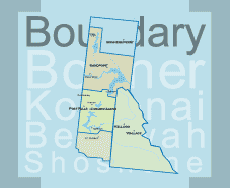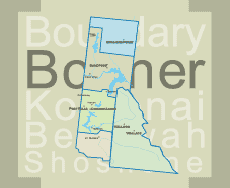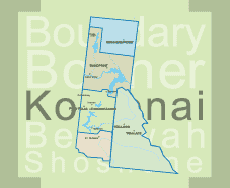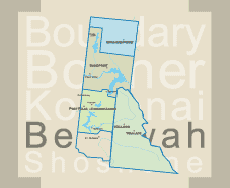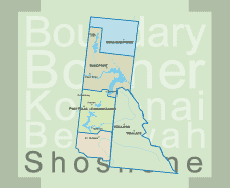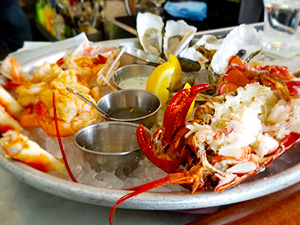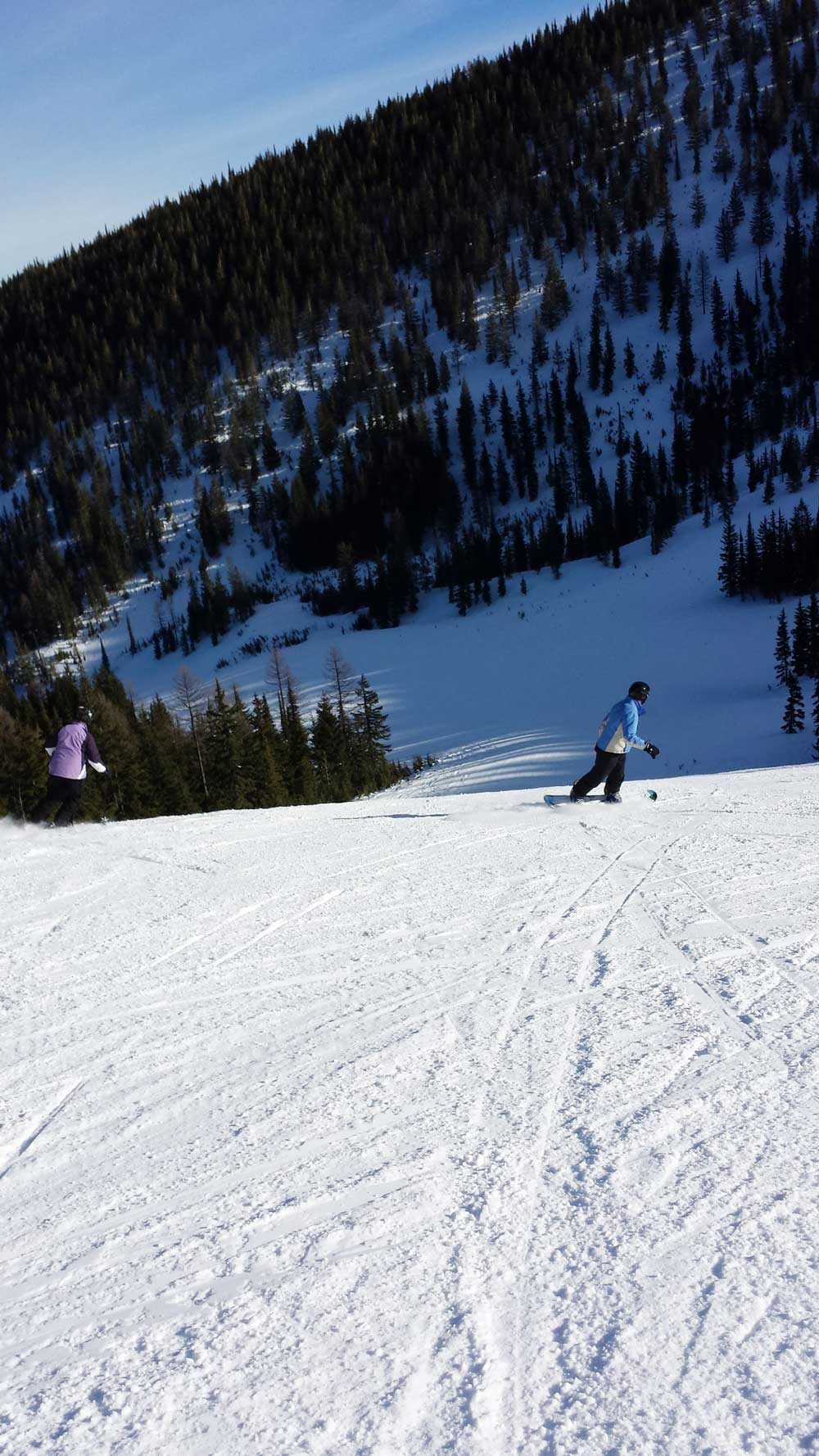
Snowboarding is a sport that involves descending a slope that is covered with snow on a snowboard attached to a rider's feet using a special boot set onto mounted binding. The development of snowboarding was inspired by skateboarding, surfing and skiing. It was developed in the U.S.A. in the 1960s and the 1970s and became a Winter Olympic Sport in 1998. Idaho. Idaho boasts mega-terrain of fun geared to the snow-boarding enthusiast.
Resorts for snowboarding:
Schweitzer Resort
Sandpoint
www.schweitzer.com
Silver Mountain Resort
Kellogg
www.silvermt.com
Snowboard Terms and Tricks
Ollie
A trick in which the snowboarder springs off the tail of the board and into the air.
Nollie
A trick in which the snowboarder springs off the nose of the board and into the air.
Fakie ollie
While riding switch, the snowboarder performs an ollie.
Fakie Nollie
Riding switch, the rider performs a nollie.
Shifty
An aerial trick in which a snowboarder twists his body, rotating his/her board 90° and then returning it to its original position before landing. This trick can be performed frontside or backside, and also in variation with other tricks and spins.
Air-to-fakie
Airing straight out of a vertical transition (halfpipe, quarterpipe) and then re-entering fakie, without rotation.
Poptart
Airing from fakie to forward on a quarterpipe or halfpipe without rotation.
Flail
A term used to describe the movements of an out-of-control snowboarder who is waving his/her hands wildly while in the air. Also called humping sheep or rolling down the windows.
Jibbing and Rail Riding
Rail riding (also known as jibbing) is a technique in snowboarding where the riders will ride over rails and other like obstacles, both man-made or natural, typically in a park or urban environment. Freeride snowboarders also commonly find incidental jibs, such as a downed tree, that prove suitable to ride over in the course of their line or run.
Freeriding
The freeride style is the most common and easily accessible style of snowboarding. It involves riding down any terrain available. Freeriding may include aerial tricks and jib (any type of fixture which can be ridden with the board that is not snow) tricks borrowed from freestyle, or deep carve turns more common in alpine snowboarding, utilizing whatever natural terrain the rider may encounter.[citation needed]
Freeriding equipment is usually a stiff soft boot with a directional twin snowboard: since the freeride style may encounter many different types of snow conditions, such as ice and deep powder.
Dry Slope
Dry slopes are man-made slopes which provide an alternative terrain for snowboarders wanting to snowboard during the summer or for those who live too far away from a snowy mountain. Dry slopes are commonly found in Europe and are rare in the United States. Common surface material are dendex, snowflex, perma-snow, astroride and neveplast.
Freestyles
In freestyle, the rider uses manmade terrain features such as rails, jumps, boxes, and innumerable other innovative features to perform tricks on. The term "box" refers to an object with a slick top, usually of polyethylene(HDPE), that the rider can slide on with the base of their board. Like all freestyle features, boxes come in a variety of shapes, sizes, and difficulty levels. The intent of freestyle is to use these terrain features to perform a number of aerial or jib tricks. The term "jib" refers to the rider doing a slide or press on an object not made of snow. This most commonly refers to tricks done on boxes, rails, or even trees.
The equipment used in freestyle is usually a soft boot with a twin tipped board for better balance while riding regular or switch, though freeride equipment is often used successfully. The most common binding stance used in freestyle is called "duck foot", in which the trailing foot has a negative degree of arc setup while the leading foot is in the positive range i.e. +12°/-9°. Freestyle riders who specialize in jibbing often use boards that are shorter than usual, with softer flex and filed down edges. Shorter length enables the board to be rotated faster, and a softer flex requires less energy for a rider to press a feature. Reverse camber boards, or better known as rocker boards, are most often used as freestyle boards due to their softer flex and inverted 'camber' design. Pressing refers to a type of jib where the rider leans heavily toward the nose or tail of their board- causing the opposite end of their board to lift off of the feature they are sliding on. This trick is typically done for added style. Freestyle also includes halfpipe tricks. A halfpipe (or "pipe") is a trench-like half-tube made of snow. Tricks performed may be rotations such as a 360° (a full turn) in the air, or an off-axis spin like a "McTwist". Tricks can be modified while hitting different features.
Freecarve
Similar to skiing, this race and slalom focused style is still practiced, though infrequently. Sometimes called alpine snowboarding, or the 'euro-carve', freecarving takes place on hard packed snow or groomed runs and focuses on the ultimate carving turn, much like traditional skiing. Little or no jumping takes place in this discipline. Freecarve equipment is a ski-like hardshell boot and plate binding system with a true directional snowboard that is usually very stiff and narrow to facilitate fast and responsive turns. Shaped-skis can thank these "freecarve" snowboards for the cutting-edge technology leading to their creation.
